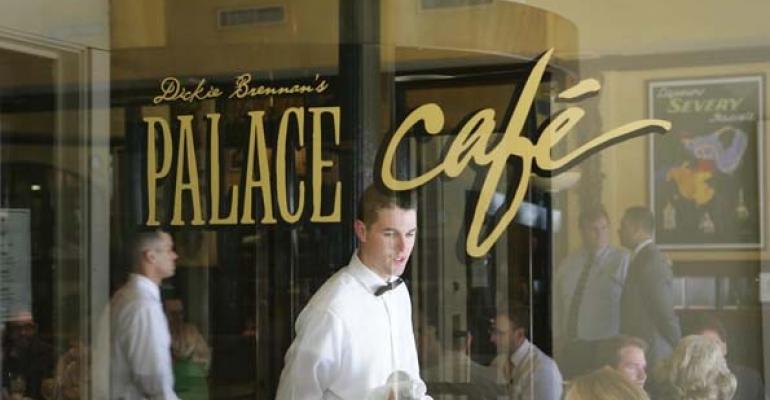Dickie Brennan & Co. has begun using a new payment solution aimed at both helping its restaurants improve the customer experience and comply with upcoming changes in credit card technology.
In September the company introduced digital bill folders, or check presenters, at its new 200-seat Tableau restaurant and debuted them at its 200-seat Palace Café in late February.
The devices, which use Viableware’s Rail system, provide advantages on several levels, according to Steve Pettus, co-owner of New Orleans-based Dickie Brennan & Co.
RELATED
• Pizza Hut tests interactive table for ordering, payment
• Analyst predicts rise of guest-facing restaurant tech
• More restaurant technology news
One plus is that they allow guests to swipe their own payment cards. “The guest never gives up the credit card,” he noted. “They swipe it themselves, and it never leaves the table.”
The device resembles a check presenter and also allows the guest to divide the checks among parties at the table, add gratuity, print or email the receipt and rate the dining experience, Pettus said. The devices also save service staff time in shuffling cards and checks back and forth to a main terminal and closing out a check. A small light on the digital bill folder goes on when the guest has completed the transaction and indicates to the waiter that it is complete.
“If there is a complaint in that rating, a text message is sent directly to the manager on duty, and they can potentially catch the guest even before they leave the restaurant,” he noted.

The device itself has also helped answer questions about guest concerns, said Derek Nettles, the Brennan group’s manager of information technology. “The guest takes a three-question survey at the end of the transaction,” he said “and a lot of their feedback has been that credit-card security is one of the most important things.”
Nettles also noted that the new devices help make guests feel more secure. “Overall, especially with all the credit card fraud that has happened recently with Target and other department stores, I think the guest feel very comfortable if the cards don’t leave their possession for the transaction,” he said.
Another security advantage is that the card readers are readily adaptable to a new, more secure, payment standard, noted Nettles.
Recently, major credit card companies have announced incentives for merchants to change their point-of-sale systems by October 2015 to comply with the EMV standard named after its developers (Europay, MasterCard and Visa). The standard, which requires cards with embedded microprocessor chips that store and protect encrypted user data, is already widely followed outside of the United States and is aimed at better protecting merchants and issuers from fraud losses at the point of sale.
The new bill folders “definitely will be ready to go when the new rules are enforced,” Nettles said.
Although the devices have many advantages, “There is a definitely a learning curve for both the staff and the guests. The Gen X and Gen Ys get it,” Pettus said. “It’s a behavioral change. The technology can be interfaced fairly quickly, but the human behavior is what takes a while to come around. You are changing 40 to 50 years of behavior.”
Contact Ron Ruggless at [email protected].
Follow him on Twitter: @RonRuggless





